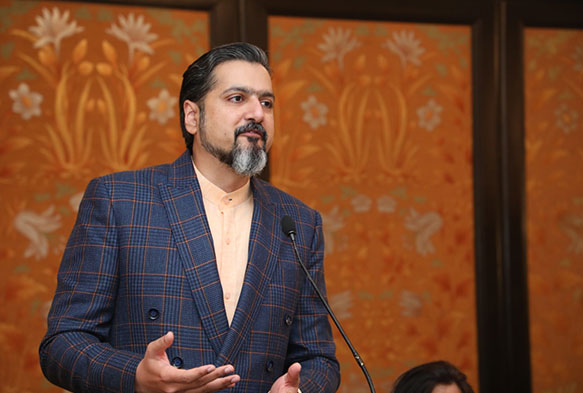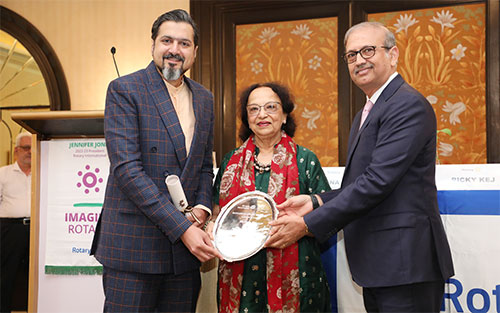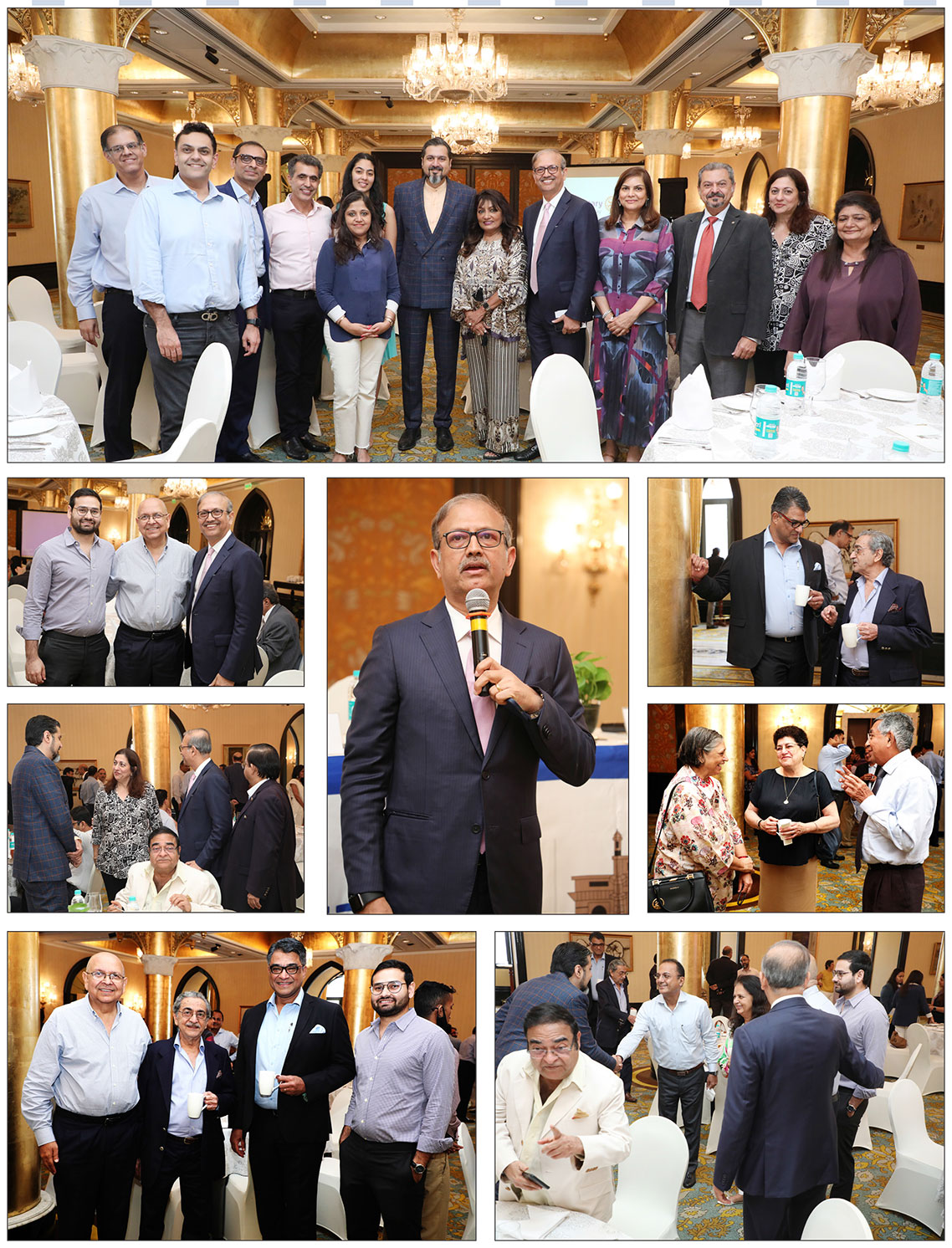
Shyam Munshi Award For Lifetime Achievement In Arts Grammy Award Winner, US Billboard #1 Artist Ricky Kej
I am a musician and an environmentalist – two pillars that have dictated all my life decisions. In the 12th grade, I decided that music would be my profession. I spoke to my father, a third-generation doctor; he was furious but after a lot of drama at home we came to a compromise: I would finish my dental surgery degree but after that my life would be my own.
So, from 9 to 5, I’d be in college and 5 to 2 am I’d be in some studio recording some jingles professionally. By the end of five years, I didn’t know anything about dentistry, but I got a degree. I gave the certificate to my father very ceremoniously, saying that dentistry was a very noble profession, but it was not for me.

I started my musical career with commercials for television and radio. I did more than 3500 commercials, for every brand imaginable, in 13 years. And then it struck me that these big brands have understood the power of music so much that they are ready to spend a few dollars on me to create music for them to sell their products. They are also ready to sell a few million dollars to air it on TV and radio.
They had understood that music is such a powerful medium that not only does it communicate the message but retains that message in the head of the listener. Like the songs we heard in our childhood which we would never forget and if there were any morals in them, they would pretty much dictate our lives.
That is when I decided that I would stop all forms of commercial music because there are so many things that I felt strongly about: environment, positive social impact, and various things around that.
I decided that the only music that came out of my studio would be about making the world a better place.
A lot of albums and a Grammy later I did an album called Shanti Samsara – world music for environmental consciousness in 2015 featuring 500 musicians in 40 countries. Anywhere in the world that I found musicians feeling as strongly for the environment as I did, I collaborated with them.
The album was launched by PM Narendra Modi and French President François Hollande at the Paris Climate Change Conference in Paris in 2015. It was the largest conference of world leaders ever in history. 195 Presidents and Prime Ministers came together to understand how to mitigate the effects of climate change and how to make a better world for future generations.
While watching this conference, one world leader who changed my life was the President of the Pacific Islands nation Kiribati, Anote Tong. He gave a 30-second speech. He said, ‘All you 195 countries here, please pass a resolution that my people of Kiribati stay above the water.’ And he walked off.
I had not heard of this island, so I studied it. It is a low-lying island and it is predicted that it is going to be the first country in the world to go completely under water and it is irreversible. I went there, spent three weeks there, and I realised it is a country with people living with nature. They have no carbon emissions, no industries, no pollution.
This state is facing the consequences of our actions, the industrial areas in our cities are leading to this global temperature and ocean rise.
What can we do to overcome this? We need a top-down and down up approach. Top-down approach is important because industries will not regulate themselves because the way we have built the system, it is difficult to go completely clean. Self-regulation becomes important. There was a staggering study by the University College, London, of what it cost an individual to put carbon in the atmosphere. The number was negative. Which means we are getting rewarded for polluting the environment and degrading it. This needs to be changed. And, of course, we need a down-up approach. That is changing ourselves, starting with small steps. Buy less, stop single use plastic and such small steps.
It is needed for artists and communicators to translate these complex ideas and thoughts in the emotional language of the arts so that they hit the hearts of people. The question is not how we create awareness, it is how we change awareness into action.
So, I hope to do something to make a difference.
Have you been working with the Indian authorities? What was your experience?
I work with multiple agencies of the United Nations, environment, UN convention on land issues, also WHO because they believe when it comes to messaging, people may or may not care about the polar bear dying somewhere in the future but what they do care is about their kids getting asthma or bronchitis. So, the whole narrative of climate change needs to be directed to health. I also work with UNESCO to talk about basic qualities of empathy and compassion. I work with the UN refugee agency to uplift quality of life. All the singers you saw in the video have been asked to leave the country because they are musicians. So, I have worked closely with our Central Government and they are charged up to work towards environmental issues. India was the first country when it came to plastic resolution, to pass the nitrogen fixation resolution. India has created a solar alliance to create solar energy to help the global south. Cochin airport is 100 per cent renewable energy. There has been a lot of work done by the Indian Government.
The jingles, what is it that you use that you think will be of focus to those customers?
Well, I don’t do the commercial music anymore but when I did, creating music was something I loved doing. It was a workout, everyday was a new challenge. I was on my toes to do different forms of music and jingles. Since I was working with so many genres and artists from all over the world, all of it seeped into my music. It was something about composing what is good and what is bad.
I remember one experience when I was creating jingle for SABMiller, they had Haywards 2000 and Haywards 5000, two types of beers. So, I created a jingle for 2000, and they were super happy. A couple of months later, they asked me to compose for 5000, but it was not working even after 5-7 iterations.
The head of SABMiller was flying down from Africa and he told me that if you want a light beer, people will drink 2-3 of Haywards 2000 and maybe 5-6 to get drunk. But half a glass of Haywards 5000 was enough to make you drunk. He was telling me the jingle should be that and that made me think and the next iteration went well. So not only you have to get the branding right but also you have to be a psychologist to understand what the client wants. They don’t sugar coat, they are going to be downright shutting you because they are paying you.
Which individual changes would be most powerful?
Within my own life,
- I do not own a car, I realised that I can use public transport. In India there is a stigma associated with public transportation.
- I do not subscribe to fast fashion. People don’t realise that there is a huge cause and effect. When you buy a pair of jeans, we don’t realise the cotton used, the land needed to grow it, the water used, the harvest and transport and processing, there is a lot of carbon and water footprint involved in it. It takes 9000 litres of water for a single pair of jeans. A cotton t-shirt is 7000 litres. I have only 11 sets of clothes. I believe fashion can be fashionable even if you repeat the outfit.
- I am an aspiring vegan. I am not able to get there yet but I am trying.
- I audit my carbon footprint and we try to mitigate it through investment in renewable companies, or tree plantation. It is green washing at the end of the day but it helps you sleep better at night.
When you compose, do you keep a raga in my mind?
Not really because that will be academic. Now that I make music only in topics I feel strongly about, like human and elephant conflict then I try to communicate.


